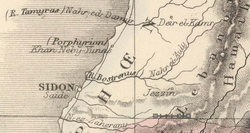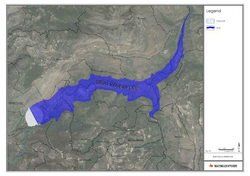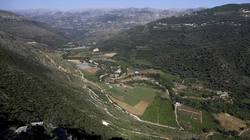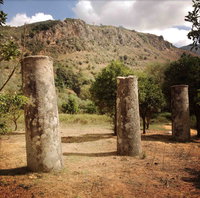Bisri
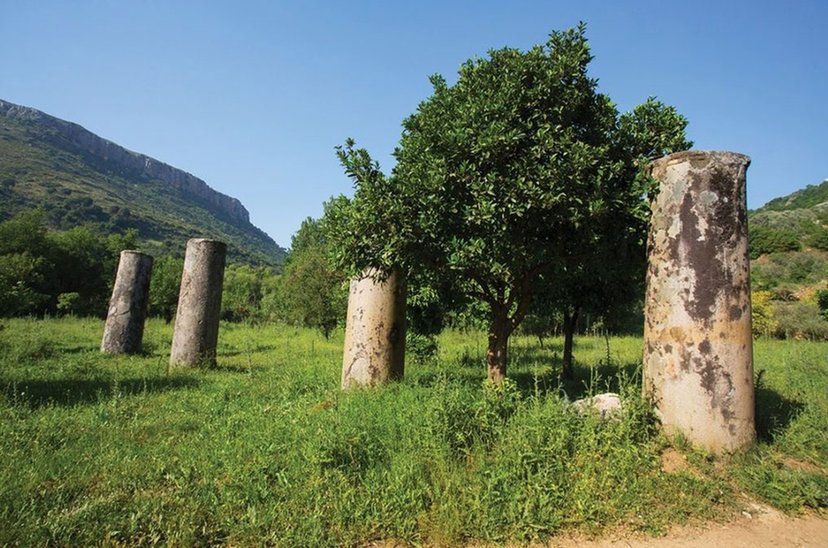
Bisri
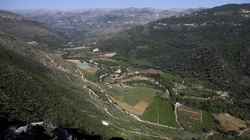
The Bisri Valley in Lebanon, where the Lebanese government plans to build a dam to supply Beirut with water which will flood and destroy around 50 archaeoligcal sites including the Bisri Temple.
Vinca Libanotica has suggested there are Roman Empire stairs in the area and refers to the site as Cleopatra's palace, suggesting it may date back to the time of Ancient Egypt.
Archaeology
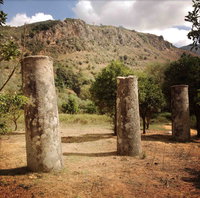
Temple of Marj Bisri
Five granite columns, four of them standing with a diameter of 1 meter are visible, which have been attributed to a Roman temple.
The temple was a four-columned Prostylos style with a Corinthian order.
The entrance was about 14.7 meters wide, making it comparable to the biggest rural temples of Lebanon.
The burial of the temple is due to the seismic activity of the region, caused by the Roum Fault.
Julien Aliquot suggested an earthquake caused a rocky collapse downstream of Marj Bisri (in the region known as Al-Joube).
The landslide would have blocked the course of the river and resulted in the formation of a reservoir of water and an accumulation of alluvium that would have gradually engulfed the temple and the surrounding site, causing it to sink into the ground.
Significance
The temple is located at the point where the Arai and Baroque rivers converge.
[11] The site has never been excavated in the past, this temple can be considered one of the most important rural archaeological sites in Lebanon.
The importance of this temple can be illustrated by some engravings on the surrounding columns and rock.
[11] It is also certain that there is a special relationship between the temples of "Eshmun" and "Bisri" based on our knowledge of the nature of the rituals adopted in Phoenician worship.
[11] Part of the Phoenician religious practices and rites were performed in two installments: the first installment in the Temple of Eshmun, which was public in nature and accessible to all people, while the special sacraments were completed in the temple of Bisri.
[11] The secrets of this relationship can be discovered only by conducting archaeological excavationsand extensive excavations between the two sites, in order to find evidence of this relationship, specifically on the Greco-Roman road connecting them.
[11] In regard to the Phoenician religious rites, it is necessary to mention that each temple has a special memory, which is a sacred excavation in the temple grounds, where the remains of rituals and vows, especially statues and clay figurines, are located, through which we can identify the type of ritual practiced in the temple and the name of the god or goddess it was dedicated to.
[11] Therefore, the excavations at the temple of Bisri are more than necessary, given the great probability of the presence of such evidence, texts and writings that may guide us to more information about the history of the temple and the use of this important building.
Name
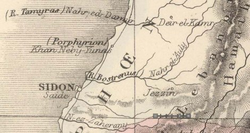
The Postrinus River, the ancient name of the First River.
As for the name Basri, it is likely to refer to Postrinus, the ancient name of the Upper Euphrates riverbed, which dates back to an ancient population known as the Postra (and probably the village of Basri as an extension).
[11] In addition to the name of "Postrinus" the river also has another ancient and interesting name, Esklepius, a name of the Greek god of healing, which confirms the close connection between the river and the temple of Eshmun at the end of the river.
Surrounding Area
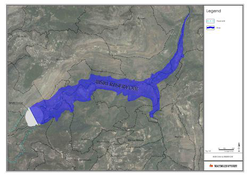
Bisri dam and the resulting lake.
The Bisri valley is characterized by its archeological monuments.
Field surveys conducted by a team of Polish and Lebanese experts in 2004, 2005 and 2008 revealed the existence of more than 110 historic sites in the valley, most notably the Temple and the Citadel of Abu Hassan.
[11] While some of these sites date back to the prehistoric civilizations, most of these sites date back to the Ottomans period, with many Roman monuments.
Most of these monuments are made up of ancient houses, villages and archaeological sites, defensive and military sites, as well as a number of farms and a large number of cemeteries.
Threat of destruction by Bisri Dam
The World Bank is trying to complete a project called the Bisri Dam by 2024 that will flood anddestroy Bisri temple and around 50 other archaeological sites because of the construction.
They do not appear to have considered launching an emergency rescue archaeological survey or excavation as of June 2018.
See also
References
- June 30, 2017

